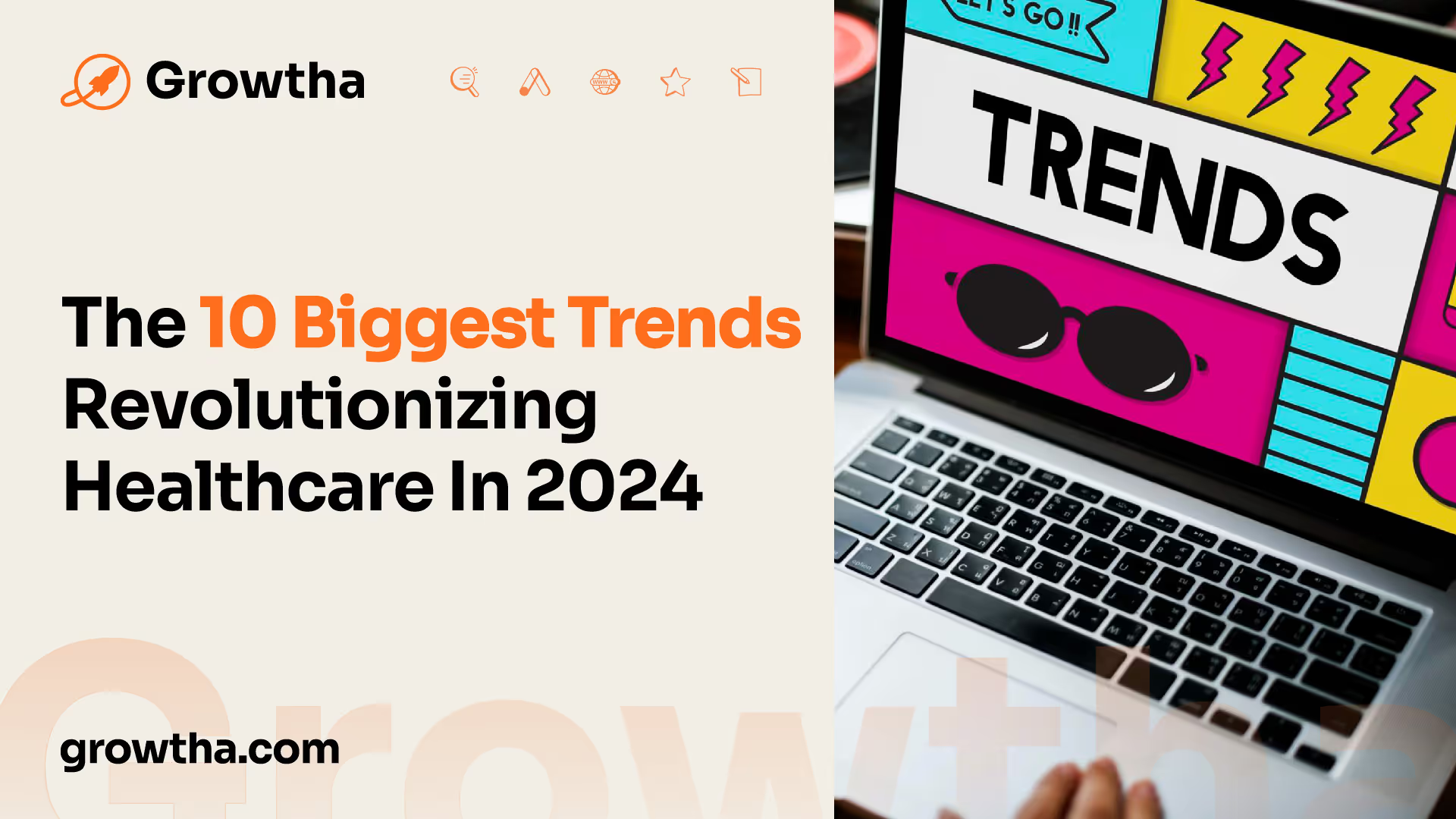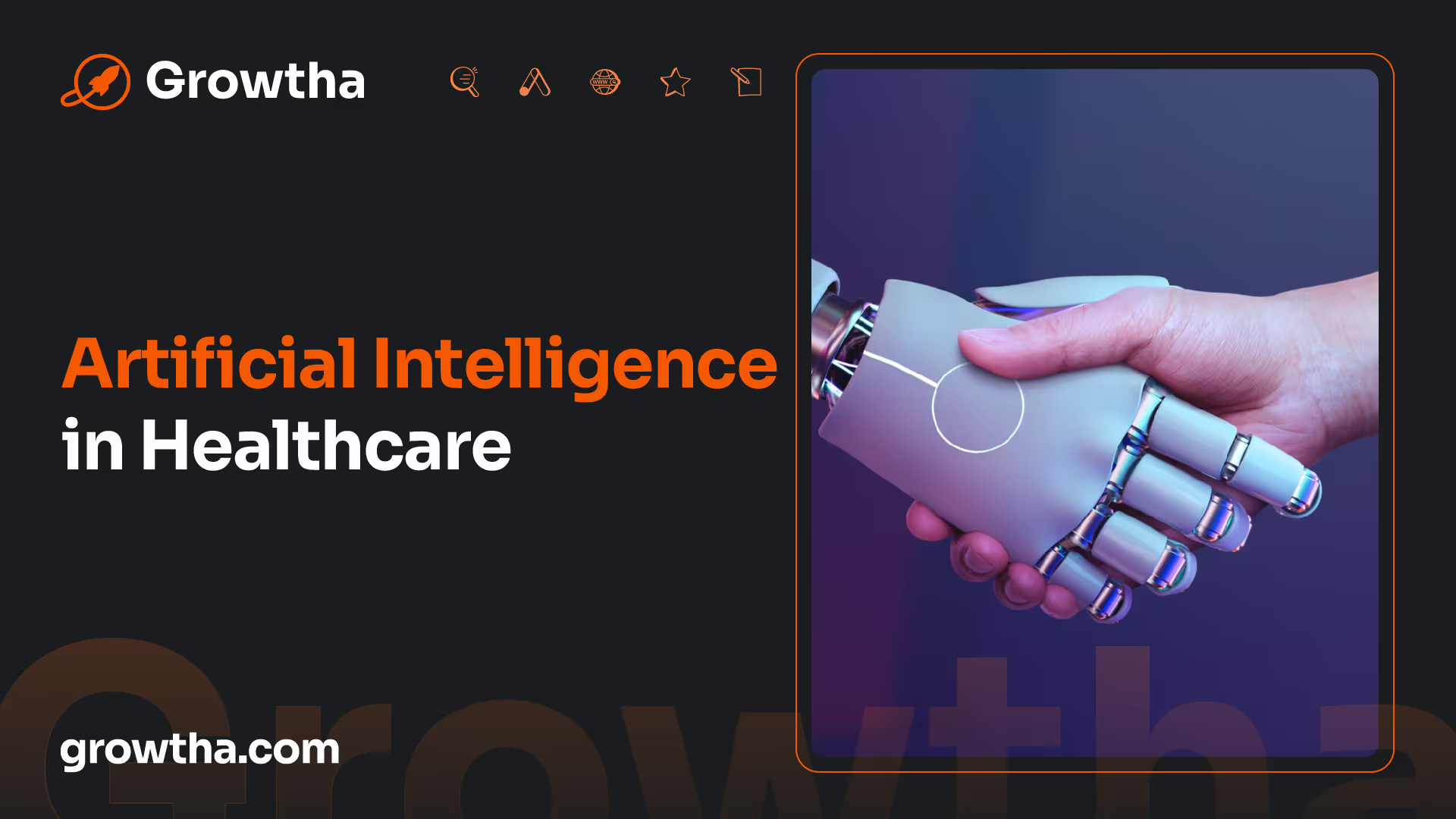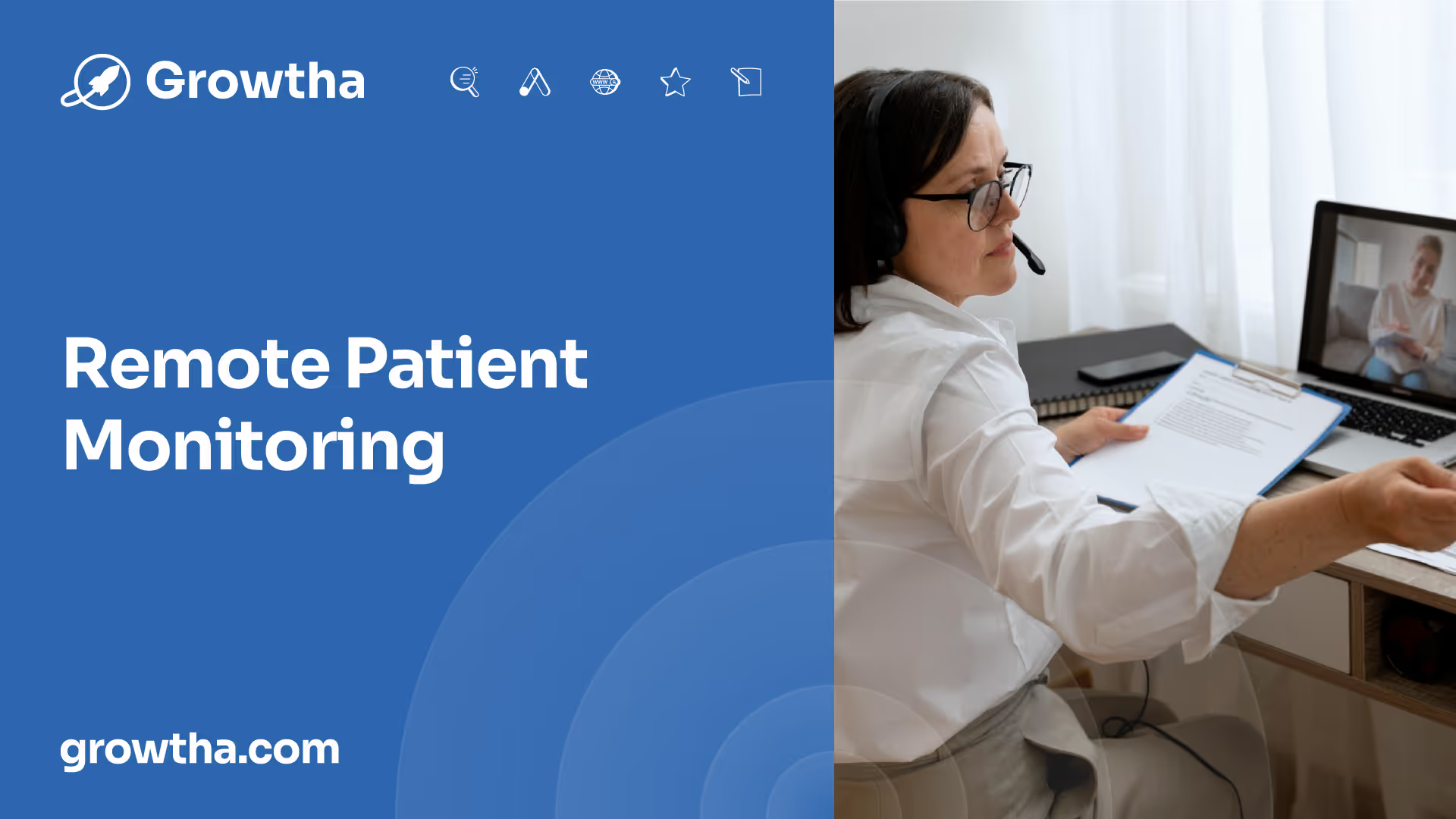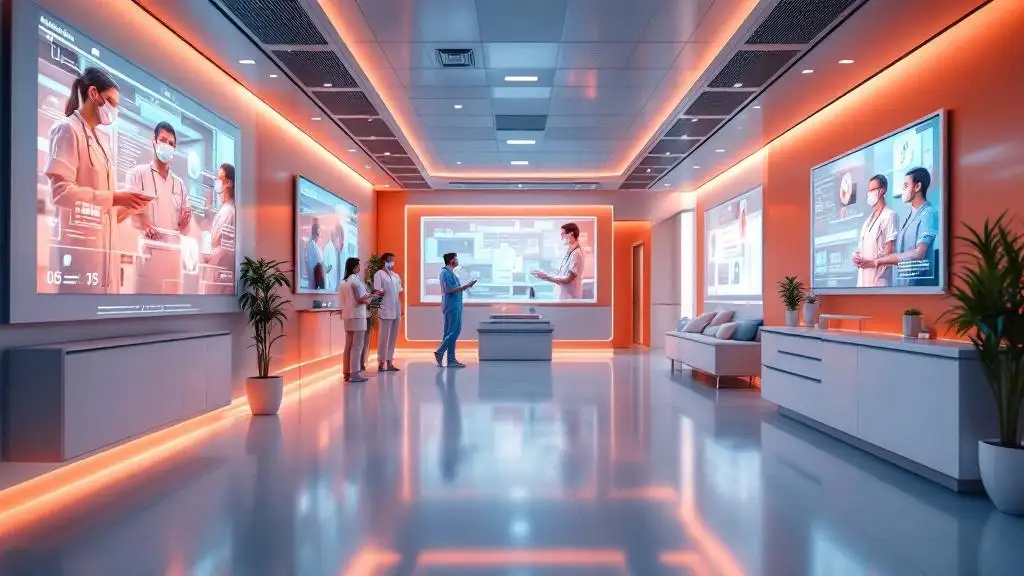The 10 Biggest Trends Revolutionizing Healthcare In 2024
In 2024, several key trends are shaping the future of healthcare, including advances in personalized medicine and the integration of wearable technology.


The 10 Biggest Trends Revolutionizing Healthcare In 2024
Healthcare Technology Trends
As healthcare continues to evolve, technology plays a crucial role in revolutionizing the industry. In 2024, several key trends are shaping the future of healthcare, including advances in personalized medicine and the integration of wearable technology.
Personalized Medicine Advances
Personalized medicine is a rapidly developing field that tailors treatment plans for individual patients using technology and data. It involves analyzing an individual's genetic makeup, lifestyle, and environmental factors to create customized treatment strategies [1]. This approach allows healthcare providers to deliver more precise and effective care, leading to improved patient outcomes and addressing healthcare challenges.
Advances in genomics and precision medicine are expected to drive the growth of personalized medicine. By leveraging the fusion of genomics and artificial intelligence (AI), providers can customize treatment plans based on an individual's genetic profile. The introduction of digital twins, virtual replicas of humans, will further enhance the ability to simulate real-world treatments and optimize resource utilization [2].
Wearable Technology Integration
The integration of wearable technology is another significant trend reshaping healthcare in 2024. Wearable devices for health monitoring and data collection are becoming increasingly sophisticated. These devices, part of the Internet of Things (IoT), offer real-time data, empowering both consumers and healthcare professionals to make informed decisions [2].
With wearable technology, individuals can track various health metrics, such as heart rate, sleep patterns, and activity levels. This data provides valuable insights into an individual's overall well-being and enables early intervention and proactive care management. Healthcare providers can leverage this information to make more accurate diagnoses and monitor patients remotely, leading to improved patient outcomes. Additionally, wearable technology offers operational efficiencies within healthcare organizations, facilitating streamlined data collection and analysis.
In conclusion, the advancement of personalized medicine and the integration of wearable technology are two noteworthy trends revolutionizing healthcare in 2024. These innovations hold the potential to enhance patient care, improve outcomes, and drive the industry towards a more patient-centric and data-driven approach. As technology continues to advance, we can expect further breakthroughs that will shape the future of healthcare.
Healthcare Data Management
In the rapidly evolving landscape of healthcare, effective data management plays a crucial role in revolutionizing the industry. Two key trends in healthcare data management that are set to make a significant impact in 2024 are big data utilization and blockchain implementation.
Big Data Utilization
Big data has opened up a world of possibilities for the healthcare industry. It encompasses a vast amount of information from multiple sources, including medical records, hospital records, effects of medical examinations, and devices that are part of the Internet of Things. The rise of big data and analytics is reshaping healthcare from reactive to proactive care. Predictive analytics and real-time data monitoring are helping to identify health risks early, leading to more preventative care and improved patient outcomes [2].
To illustrate the potential impact of big data utilization, let's consider an example. By analyzing large datasets of patient information, healthcare providers can identify patterns and trends that help predict disease progression and treatment outcomes. This data-driven approach enables personalized treatment plans tailored to individual patients, optimizing the effectiveness of healthcare interventions.
Blockchain Implementation
Blockchain technology is gaining traction in the healthcare industry due to its potential to enhance data security, interoperability, and privacy. Blockchain is a decentralized and tamper-evident digital ledger that allows for transparent and secure sharing of healthcare data. It provides a solution to some of the challenges faced by patients, providers, and organizations in the adoption and deployment of digital health technologies.
By leveraging blockchain, healthcare organizations can ensure the integrity and immutability of patient records, reducing the risk of data breaches and unauthorized access. Additionally, blockchain enables seamless and secure exchange of patient data across different healthcare providers, improving interoperability and facilitating continuity of care.
In summary, big data utilization and blockchain implementation are two notable trends in healthcare data management that are set to revolutionize the industry in 2024. By harnessing the power of big data and leveraging the security and transparency of blockchain, healthcare organizations can unlock new insights, improve patient care, and drive innovation in the ever-evolving healthcare landscape.

Artificial Intelligence in Healthcare
Artificial intelligence (AI) is revolutionizing the healthcare industry by introducing advanced capabilities and transforming various aspects of patient care. In 2024, two prominent trends in AI are emerging: AI for infection prevention and generative AI impact.
AI for Infection Prevention
AI has the potential to significantly enhance infection prevention and control measures in healthcare settings. By leveraging AI technologies, healthcare professionals can quickly identify and designate infection risks, enabling early clinical intervention and reducing the spread of infections [3].
Through the analysis of vast amounts of data, AI algorithms can detect patterns and identify potential sources of infections, allowing healthcare providers to implement proactive measures. Advanced AI models can predict the likelihood of infection outbreaks, helping hospitals allocate resources efficiently and take preventive actions to minimize the impact on patients and staff.
Generative AI Impact
Generative AI is another significant trend that is set to have a profound impact on healthcare in 2024. This technology enables healthcare professionals to leverage AI algorithms for a wide range of tasks, including summarizing medical research and clinical notes, as well as aiding in diagnosing diseases through advanced imaging [5].
One of the key advantages of generative AI is its ability to address chronic staffing problems in hospitals by handling mundane tasks, allowing healthcare professionals to focus on critical patient care. By automating time-consuming processes and providing valuable insights, generative AI streamlines workflows and enhances the efficiency of healthcare delivery.
Moreover, generative AI democratizes access to other transformative AI applications by creating synthetic data for training medical AI algorithms and generating personalized recommendations [1]. This technology opens up new possibilities for personalized medicine and precision healthcare, ensuring that patients receive tailored treatment plans based on their unique characteristics.
As the integration of AI and healthcare deepens, these trends are expected to shape the future of patient care. AI's ability to improve infection prevention and control, as well as generative AI's impact on automating tasks and enhancing decision-making, will continue to revolutionize healthcare delivery in 2024 and beyond.

Remote Patient Monitoring
Remote patient monitoring is transforming the healthcare landscape by enabling the remote monitoring of patients' health and providing access to healthcare services from the comfort of one's home. This section explores two key components of remote patient monitoring: the Internet of Medical Things (IoMT) and virtual healthcare assistants.
Internet of Medical Things (IoMT)
The Internet of Medical Things (IoMT) refers to the combined infrastructure of services that connect rural and urban healthcare systems, facilitating remote monitoring of patients' health, also known as telemedicine. The IoMT market has been experiencing rapid growth, with a value of $44.5 billion in 2018 and a projected value of $254.2 billion in 2026. The integration of IoMT into healthcare systems allows for real-time monitoring and collection of patient data, enhancing the quality of care and improving patient outcomes.
Virtual Healthcare Assistants
Virtual healthcare assistants, including chatbots, are revolutionizing the way healthcare is delivered. These digital assistants support clinicians by providing treatment advice, diagnoses, and medication information, while also helping patients access care details and make informed decisions [1]. Virtual healthcare assistants can interface with electronic health record systems, improve patient compliance with reminders, and even provide companionship to patients. By leveraging artificial intelligence and natural language processing capabilities, virtual healthcare assistants enhance the efficiency of healthcare delivery and improve patient engagement.
Utilizing the IoMT and virtual healthcare assistants, remote patient monitoring empowers healthcare providers to deliver personalized care and monitor patients' health remotely. This approach not only improves access to healthcare services but also reduces healthcare costs and enhances patient convenience.
As technology continues to advance, the integration of remote patient monitoring into healthcare systems will play a crucial role in transforming the way healthcare is delivered, ensuring efficient and effective patient care. It is expected that the IoMT and virtual healthcare assistants will continue to evolve and contribute significantly to the future of healthcare.
Holistic Healthcare Approach
In 2024, the healthcare industry is witnessing a significant shift towards a more holistic approach to healthcare, recognizing the interconnectedness of mental and physical well-being. This approach aims to integrate mental health and physical health services to provide comprehensive care to patients.
Mental and Physical Health Integration
According to experts cited in Forbes, there is a growing recognition of the intrinsic links between mental and physical health. This understanding is driving the integration of mental and physical healthcare delivery. By addressing both aspects together, healthcare providers can better support patients in achieving overall well-being.
Integrating mental and physical health involves incorporating mental health screenings, assessments, and interventions into routine medical care. It also involves collaboration between primary care providers, mental health professionals, and specialists to develop comprehensive treatment plans.
By adopting a holistic approach, healthcare providers can identify and address the underlying mental health factors that may contribute to physical health conditions. This approach not only improves patient outcomes but also helps reduce healthcare costs by preventing the progression of physical health issues that may be influenced by mental health factors.
Virtual Hospital Units
Another trend revolutionizing healthcare in 2024 is the emergence of virtual hospital units. With advancements in technology, healthcare providers are leveraging virtual platforms to deliver care remotely, expanding access to healthcare services.
Virtual hospital units enable patients to receive medical care, monitoring, and consultations from the comfort of their own homes. This approach is particularly beneficial for patients with chronic conditions or those who require ongoing monitoring but do not need to be physically present in a hospital setting.
By utilizing telehealth technologies and remote patient monitoring devices, healthcare providers can remotely monitor vital signs, track symptoms, and communicate with patients virtually. This not only improves convenience for patients but also reduces unnecessary hospital visits and eases the burden on healthcare facilities.
Virtual hospital units also enhance the continuity of care by enabling seamless communication between healthcare providers, ensuring that necessary information is readily accessible to all members of the care team.
The integration of mental and physical health and the introduction of virtual hospital units are transforming the healthcare landscape, improving patient care, and expanding access to healthcare services. These trends are driven by advancements in technology, changing patient expectations, and a growing emphasis on preventive and patient-centered care. As healthcare continues to evolve, these trends are likely to shape the future of healthcare delivery.
Legislative and Regulatory Forecast
As we look ahead to 2024, several legislative and regulatory changes are expected to shape the healthcare landscape. These changes will have a significant impact on various aspects of healthcare, including telehealth coverage and prescription drug pricing.
Telehealth Coverage Changes
Telehealth has become increasingly important in healthcare, especially during the COVID-19 pandemic. To maintain the flexibility and accessibility of telehealth services, Congress must intervene before 2025 to extend the telehealth coverage and payment policies implemented during the pandemic [6]. The focus on Medicare changes related to telehealth coverage will likely increase as key expirations approach. These changes aim to ensure that individuals can continue to access healthcare remotely, improving convenience and expanding access to care.
Prescription Drug Price Policies
The high cost of prescription drugs has been a long-standing concern in the healthcare industry. Addressing this issue has garnered bipartisan support, and efforts to tackle high prescription drug prices are expected to continue in 2024 [6]. Congress is scrutinizing the role of pharmacy benefit managers (PBMs) and aiming to increase transparency while banning spread pricing in Medicaid. These policies seek to make prescription drugs more affordable and ensure that individuals have access to the medications they need.
Incremental measures to improve healthcare affordability are also expected to be a focus in 2024. Efforts include addressing concerns with price-transparency regulations for hospitals and health plans, as well as overseeing the implementation of the No Surprises Act [6]. These measures aim to create a more transparent and affordable healthcare system for individuals, reducing surprise medical bills and increasing overall healthcare affordability.
Future Healthcare Regulations
In alignment with President Biden's promise to build on the Affordable Care Act, the administration plans to finalize rules expanding access to comprehensive coverage and strengthening consumer protections in 2024. These expansions include policies to expand eligibility for coverage through the marketplace, Medicaid, and Basic Health Program to Deferred Action for Childhood Arrivals recipients [6]. These regulations aim to improve access to healthcare for individuals who may have previously been excluded or faced barriers to coverage.
Legislative and regulatory changes play a crucial role in shaping the healthcare landscape. By addressing issues such as telehealth coverage and prescription drug pricing, policymakers aim to create a more accessible, affordable, and equitable healthcare system for all individuals. It is important to stay informed about these changes as they unfold, as they have the potential to significantly impact healthcare delivery and patient outcomes.
References
[3]: https://theonetechnologies.com/blog/post/top-emerging-healthcare-technology-trends-2022
[4]: https://www.fticonsulting.com/insights/articles/evolution-healthcare-trends-watch-2024
[5]: https://news.medtronic.com/five-healthcare-technology-trends-in-2024-newsroom
[6]: https://www.commonwealthfund.org/blog/2024/forecast-legislative-and-regulatory-activity-health-care-2024







